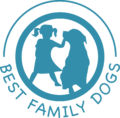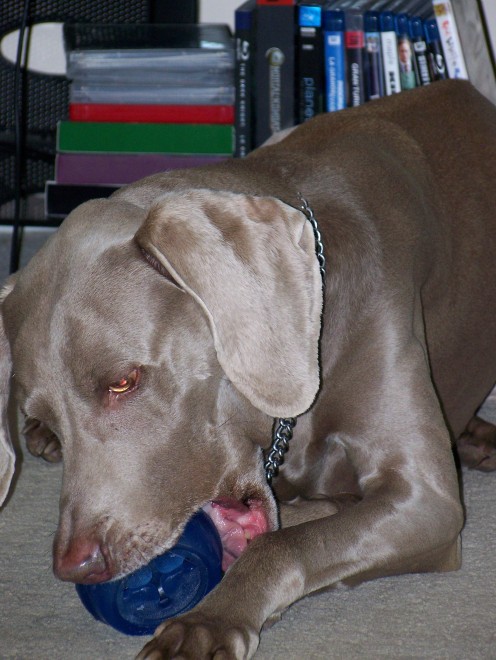The Weimaraner breed is a high risk for gastric torsion, or “twisted stomach” or severe “bloat”. Medically known as “Gastric Dilation and Volvulus” or GDV is very serious, very painful and can be life-threatening. Definitely requires emergency medical intervention.
Weimaraners are high risk for this feeding issue because they are a large breed, fit and lanky dog, with a deep chest. All of these physical traits contribute to increasing the Weimaraner’s risk of developing GDV .
Weimaraners also tend to eat like they are starving all the time! They are huge food gluttons! This super fast intake of their meals is yet another reason they are prone to GDV.
Weimaraners instinctually love to chase and run, so they will do so regardless of when they last ate, even if it’s only been a few minutes, if this breed sees something that catches their attention – they’re off!
Dispelling Feeding Myths
The newest research in GDV prevention dispels myths around previous solutions as not being helpful. The newest changes are:
- Raised food bowls, actually increase the risk of GDV, so don’t use them!
- Adding water to moisten kibbles increases the risk of GDV if the food brand uses a common preservative – citric acid. This metabolizes to more gas in the dog’s stomach during digestion.
Another misconception is that only large breed dogs get GDV, small dogs do too. Perhaps we just don’t hear about it as much. The same advice for solutions still stands for all dog’s regardless of size.
Current Research on Gastric Dilation and Volvulus Supports These Feeding Habits:
The newest research in veterinarian surgery and medicine supports that dogs should be:
- Fed with their bowls at floor level, not elevated.
- That high-quality dry kibble with protein -packed meat should be in the first 3 ingredients.
- Many people chose to feed raw food diets and this is great, provided the food is prepared and fed as fresh as possible.
- Raw food diets, table scrapes, dog probiotics and rendered meats with lots of bone content have been found to be preventative against GDV.
- To decrease risk of GDV, you can invest in slow feed bowls or puzzle toys that will add a bit of challenge to dogs who practically filter-feed their meals!
These tools will be used daily for the rest of the dog’s life, and lets them slow down to enjoy their meal in the safety of their homes, rather than eat like they are under constant threat in the wild!
Feed your Weimaraner 2-3 times a day, instead of one really large meal. This is what our vet, Dr P. recommended for Titan. He still ate like a glutton if we would let him! Plan the dog’s meals to allow the dog to stay quiet and calm for at least 30 minutes -1 hour after eating. Exercise too soon after eating or even emotions such as stress, can increase the risk of GDV.
Best Care for Your Weimaraner
Hope you found this information of GDV in Weimaraners helpful. Remember to check what you think you know, because every few years research teaches us more. Sometimes it disproves our current strategies with elevated feeding bowls and adding water to dog’s diets. Sometimes we find out we are doing the all the right things, like encouraging raw food diets, and having tools to slow dog’s eating pace.
Share your Weimaraner eating stories!

